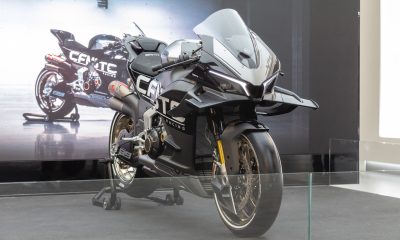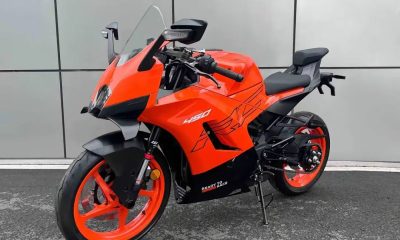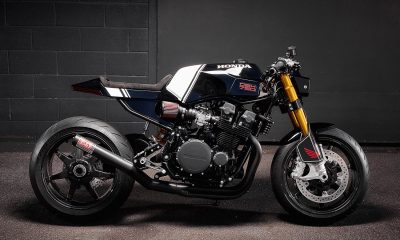Discover the groundbreaking SPHEV hybrid motorcycle engine system by Yamaha, blending combustion and electric power for enhanced performance, efficiency, and acceleration.

Subscribe to our Telegram channel for instant updates!
Yamaha has once again showcased its commitment to innovation with the unveiling of its latest hybrid motorcycle engine system. Revealed last week, this cutting-edge technology was seen in a maxi scooter prototype, hinting at a potential new direction for the Japanese motorcycle giant. If brought to production, this system could redefine how hybrid powertrains function in motorcycles.
How the SPHEV System Works
Spotted by Visordown, Yamaha’s new hybrid system—dubbed the Series-Parallel Hybrid Electric Vehicle (SPHEV) system—seamlessly integrates internal combustion and electric propulsion. The system consists of:
- A combustion engine
- A motor generator mounted on the crankshaft
- An electric drive motor connected to the rear axle
When the motorcycle starts, it operates in full EV mode, using only the axle-mounted electric motor for an immediate and silent takeoff. As the speed increases, the combustion engine kicks in, transitioning the bike into hybrid mode, which enhances overall performance. Additionally, regenerative braking ensures that energy is efficiently recaptured to recharge the battery.

Boost Modes for Enhanced Performance
To maximize acceleration, Yamaha has included two special boost modes:
- Dual Boost Mode – The electric motor and combustion engine work together to improve acceleration, offering a quick burst of power.
- Triple Boost Mode – In this mode, the electric motor, combustion engine, and motor generator all contribute, delivering additional torque directly to the crankshaft for an even more powerful ride.
A demonstration video from Yamaha showcased the prototype reaching speeds of 90 km/h (56 mph) on a dyno. While it remains unclear whether this represents its top speed, it suggests the system’s capability to provide competitive performance.
Yamaha’s Hybrid Experience and Market Potential
This isn’t Yamaha’s first venture into hybrid technology. In India, the company has introduced a mild hybrid system in select scooters and a 150cc commuter motorcycle. However, these models primarily use an Integrated Starter Generator (ISG) for assisting during initial acceleration rather than offering full hybrid functionality.
By contrast, Yamaha’s new SPHEV system represents a significant leap forward, incorporating a more dynamic hybrid architecture. However, it remains uncertain whether this technology will make it into mass production or if it will appeal to a broad market.

Comparisons With Kawasaki’s Hybrid Efforts
Yamaha isn’t the only player experimenting with hybrid motorcycles. Kawasaki first hinted at hybrid motorcycle technology in 2020 and later launched the Ninja 7 Hybrid in 2023. This 451cc parallel twin motorcycle produces 58.3 hp on its own and 68.5 hp with electric assist, making it one of the first hybrid motorcycles available for purchase.
While the Ninja 7 Hybrid has been praised for its innovation, it comes with a hefty price tag of $12,500 and doesn’t offer a significant top-end performance advantage over similarly powered motorcycles. This has likely limited its appeal to a niche audience, raising questions about the viability of hybrid motorcycles in the mainstream market.
What’s Next for Yamaha’s SPHEV System?
Currently, Yamaha is actively testing the SPHEV system both on the road and in controlled environments like dynos. While there’s no confirmation on whether the showcased scooter will reach production, Yamaha’s press release suggests the SPHEV system could be implemented in future naked street bikes and sport motorcycles.
Interestingly, the maxi scooter prototype showcased in the reveal borrows headlight styling from the 2025 Yamaha MT-09, hinting at a design language that might influence upcoming hybrid models.
Final Thoughts of the Technology by Yamaha
Yamaha’s foray into hybrid motorcycles is an exciting development that could shape the future of two-wheelers. With the potential to improve fuel efficiency, enhance acceleration, and introduce cutting-edge technology to motorcycles, the SPHEV system is a promising innovation. However, whether it gains widespread adoption will depend on pricing, performance, and market reception.
As Yamaha continues testing and refining its hybrid technology, motorcycle enthusiasts and industry watchers alike will be keeping a close eye on what’s next for this groundbreaking project.































Facebook
Instagram
X (Twitter)
YouTube
LinkedIn
RSS